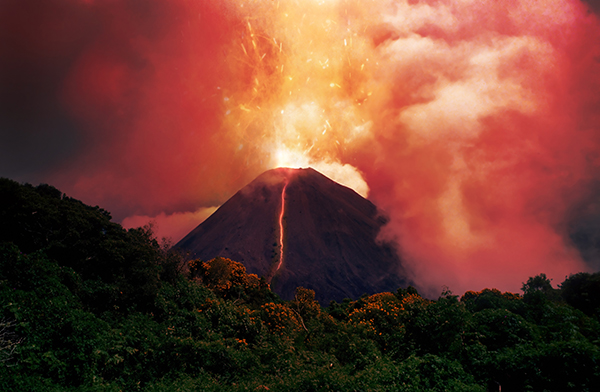
More than 7,000 people evacuated during La Palma volcanic eruption
The La Palma volcanic eruption started on September 19, 2021, on the western slope of Cumbre Vieja. It was active for 85 days and caused the evacuation of more than 7,000 people, many of whom lost their homes and livelihoods. It also destroyed roads and basic infrastructure. (Related: Thousands of La Palma residents forced to evacuate after volcanic eruption.) The volcano ejected ash and rivers of lava that swallowed over a thousand homes in La Palma, part of the Canary Islands located outside western Africa. Aside from destroying schools, churches and highways, it smothered the abundant banana plantations that drive the island's economy. The volcano did not have a name before the eruption, but it was popularly called Cumbre Vieja after the name of the surrounding national park. Citizens of the island voted to call it Tajogaite last year, which was the name of the region in the ancient Guanche language. Other long-lasting impacts of the eruption are continuous gas emissions leading to respiratory problems, skin pathologies and mental and anxiety problems among people. The new technique presented in the study can aid in the detection of possible volcanic eruptions. But the most important thing is to spread the information gathered through studies. In the La Palma case, it appears that critical information was hidden from the public. Follow Disaster.news for more news about volcanic eruptions and other natural disasters. Watch the video below showing the lava from the volcanic eruption in La Palma. This video is from the The Prisoner channel on Brighteon.com.More related stories:
At least 700 tremors recorded off La Palma, Spain: New magma may be rising, warn experts. Volcanic eption triggered worst mass extinction in Earth's history – study. A single volcanic eruption caused one of the planet's most devastating mass extinctions, scientists discover. Underwater volcano eruption caused global “dimming” that deprived crops of sunlight; more famine and starvation to come. Larger than first believed: Massive tsunami nearly destroys Pacific island nation of Tonga following volcanic eruption equal to 10 megatons of TNT. Sources include: StrangeSounds.org Phys.orgThink tank: America’s defense industry is not prepared for a war with China over Taiwan
By Arsenio Toledo // Share
NY Stock Exchange cancels early trades after glitch impacts 200+ stocks
By Belle Carter // Share
Space running out of space: Experts warn space race could lead to war on Earth
By Kevin Hughes // Share
An invisible assault: How everyday heavy metals sabotage brain health
By willowt // Share
Pentagon warns of China's rapidly expanding nuclear arsenal
By kevinhughes // Share
FCC grounds new Chinese drones in sweeping security move
By avagrace // Share
The methylation switch: Scientists identify diet that can turn back the cellular clock
By jacobthomas // Share
Renaissance or Ruin: A wake-up call for cultural revival and self-sufficiency
By kevinhughes // Share
Weight loss in midlife may trigger brain inflammation, study finds
By avagrace // Share











